LITE ON TECHNOLOGY WCBN4507R Wi-Fi, BT, USB Combo Module User Manual LiteOn Technology Corp
LITE-ON Technology Corp. Wi-Fi, BT, USB Combo Module LiteOn Technology Corp
User Manual
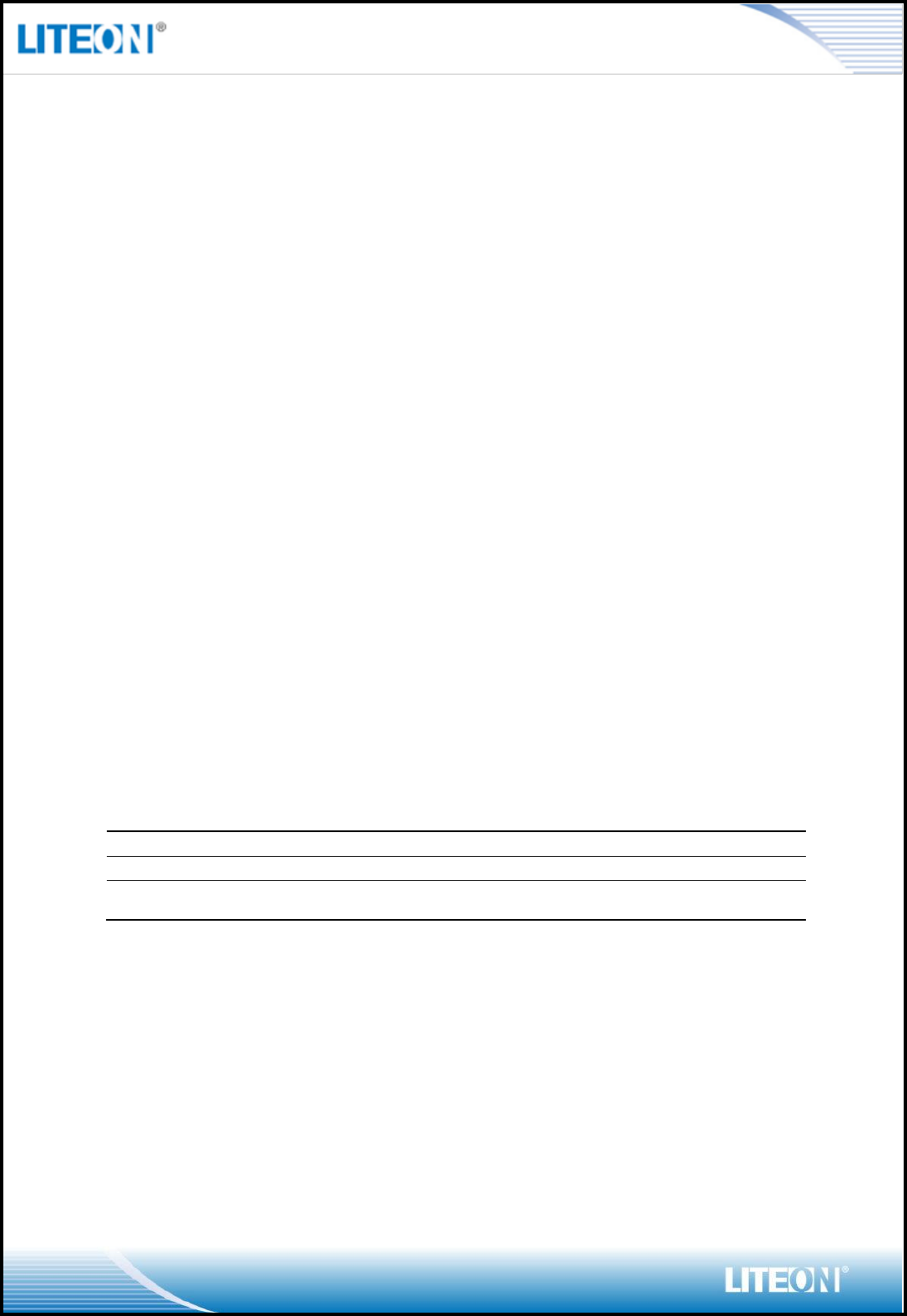
Page 1/11
PRODUCT SPECIFICATION
Wi-Fi (11a/b/g/n/ac 2Tx2R)+BT (V4.1LE) USB Combo Module
WCBN4507R
MediaTek MT7662U
Version 1.1
Change History
Revision
Date
Author
Change List
Version 1.0
2015/04/10
Ben J Chen
Preliminary
Version 1.1
2015/05/20
Ben J Chen
Update Mechanical
Update Label Drawing
* This document contains confidential proprietary information and is property of LTC. The contents of
this document should not be disclosed to unauthorized persons without the written consent of LTC.
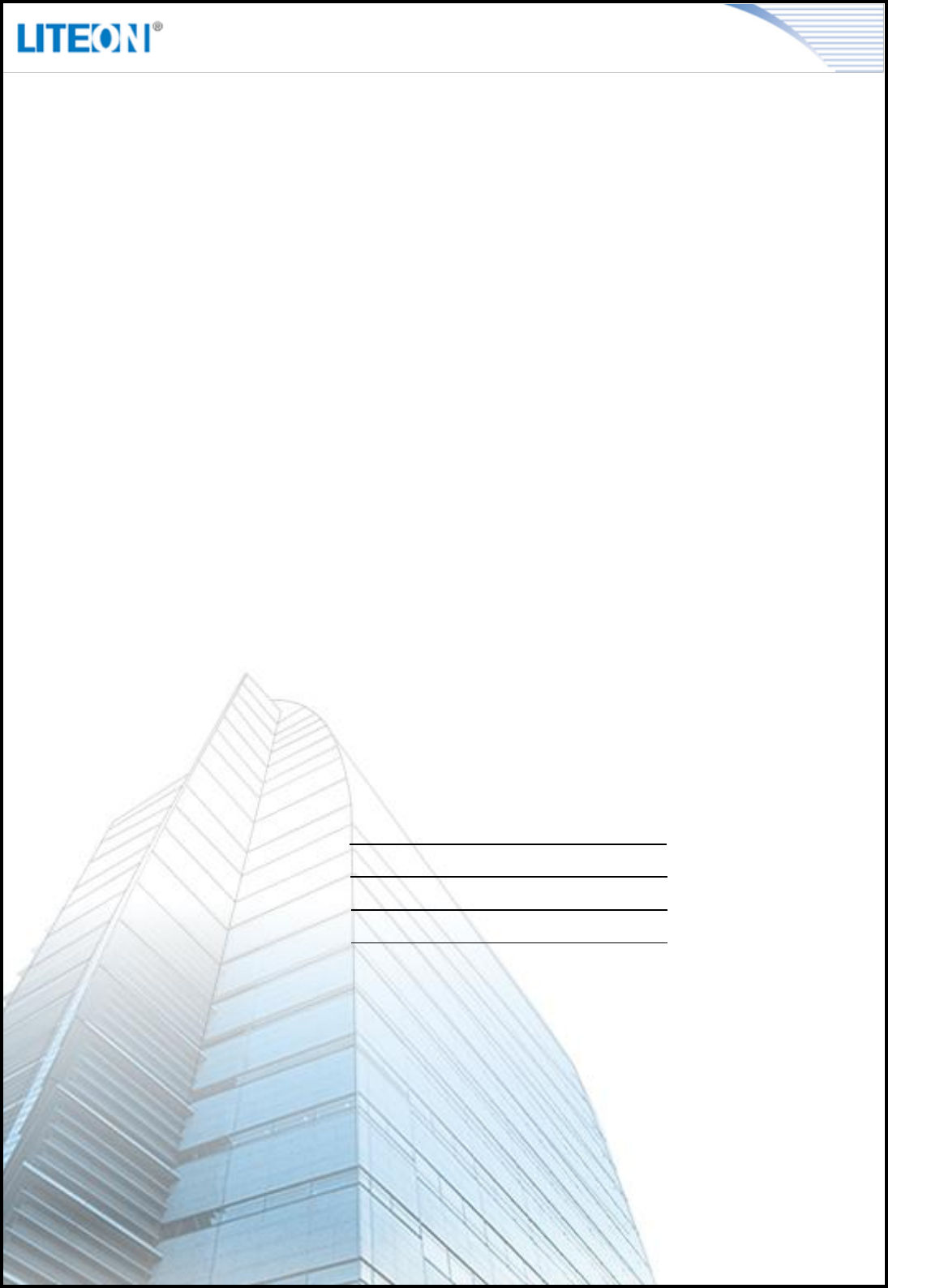
Page 2/11
PRODUCT SPECIFICATION
Wi-Fi (11a/b/g/n/ac 2Tx2R)+BT (V4.1LE) USB Combo Module
WCBN4507R
MediaTek MT7662U
Version 1.1
Networking B.U.
Lite-on Technology Corporation
4F, No. 90, Chien 1 Rd.,
Chung Ho, New Taipei City 235, Taiwan, R.O.C.
Customer Approval: (Signature)
(Title)
(Company)
(Date)
(Please Sign Back by FAX. For Confirming the Spec Only, not an Official Agreement for OEM/ODM Business)
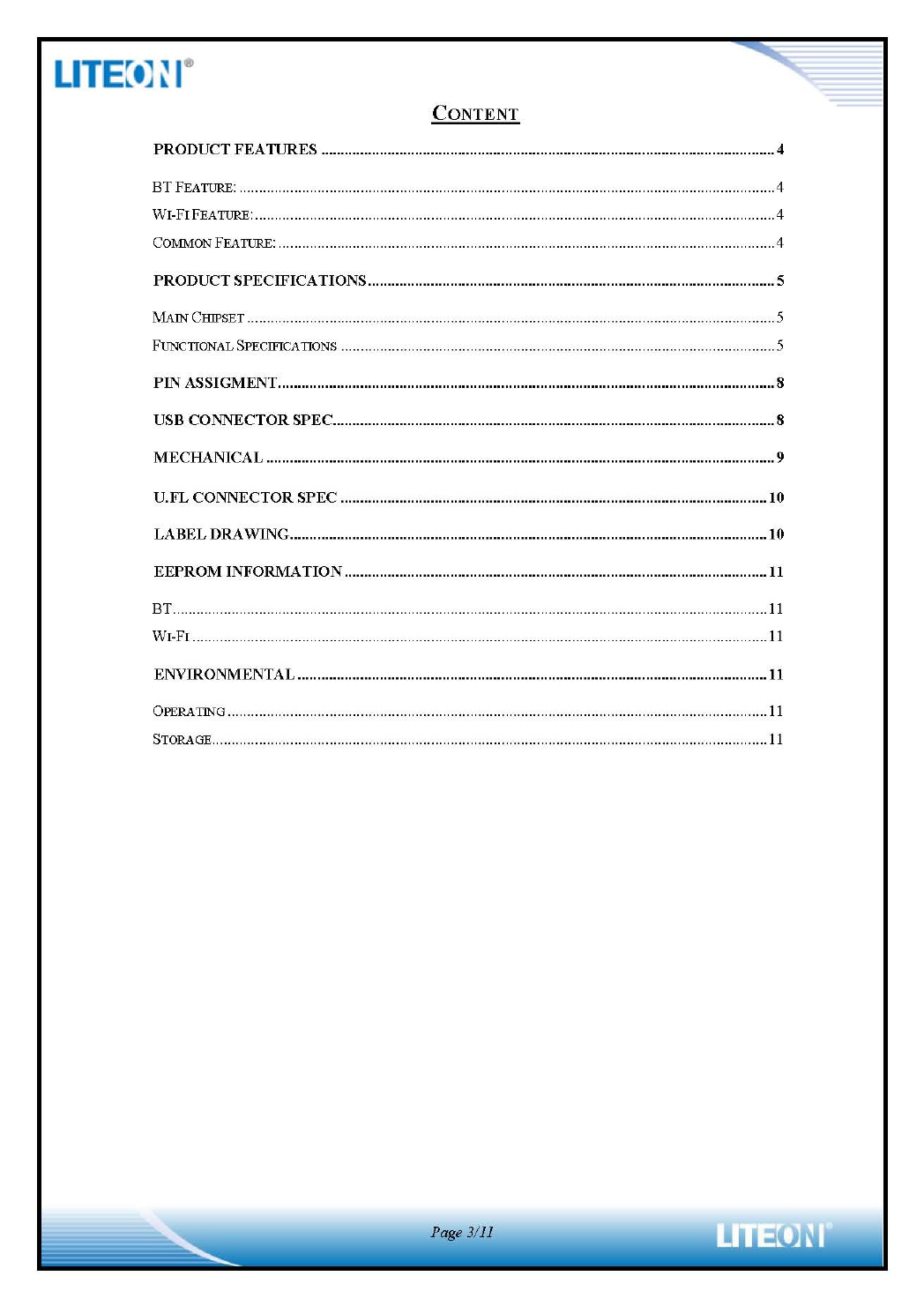
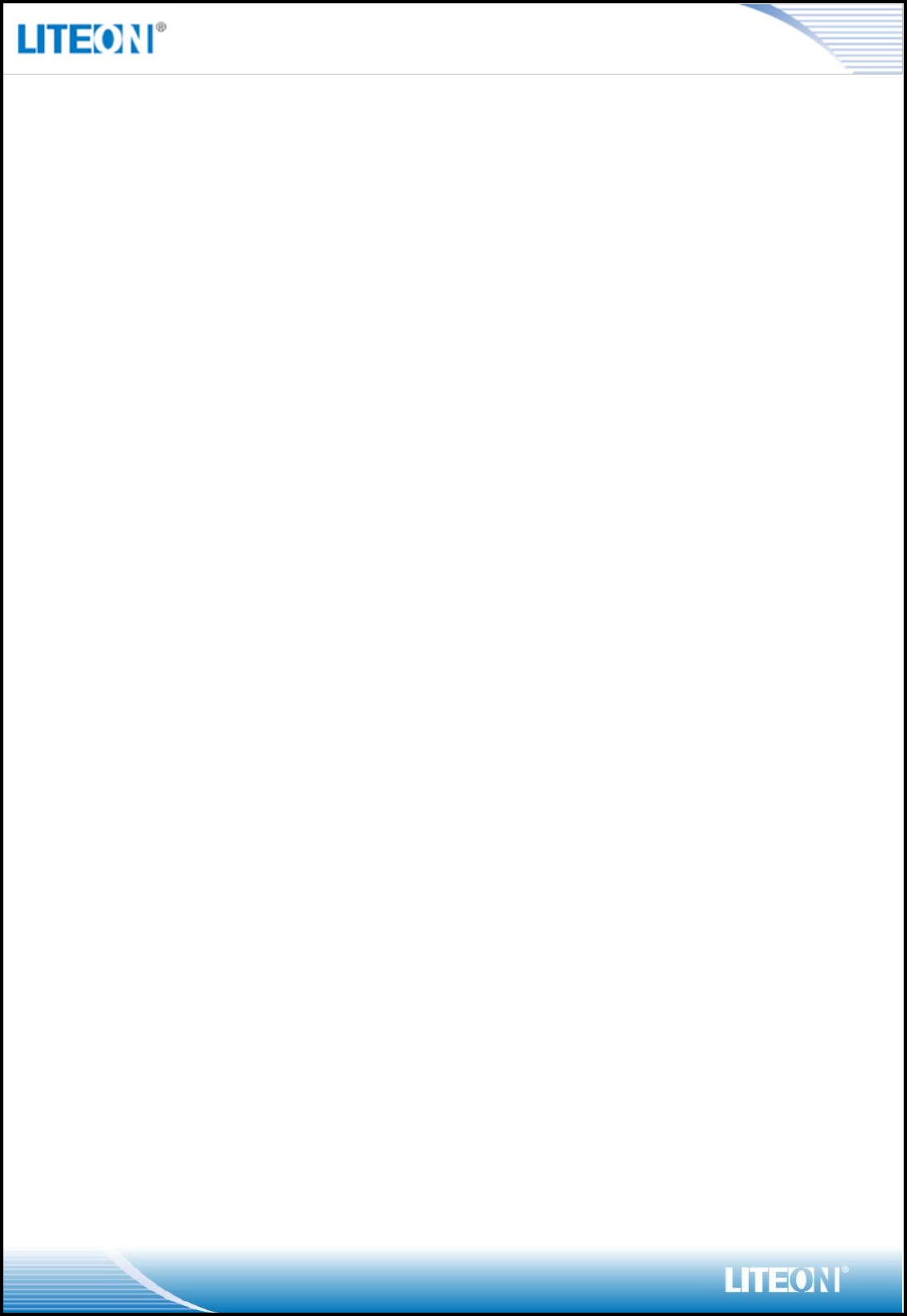
Page 4/11
PRODUCT FEATURES
BT FEATURE:
Bluetooth V4.1 LE system
Backwards compatible with BT version of 1.1, 1.2, 2.0, 2.1 and 3.0+HS
Bluetooth Class 1 transmission power
Best-in-class BT/Wi-Fi coexistence performance
Support for Simple Pairing (SP) and Enhanced Inquiry Response (EIR) function
Support for SCATTERNET and up to piconets simultaneously with background
inquiry/page scan
Support wide-band speech and hardware accelerated SBC codec for A2DP
streaming
Support Wake On Bluetooth
WI-FI FEATURE:
Operate at ISM frequency Band (2.4/5GHz)
IEEE Standards Support, 802.11a ,802.11b, 802.11g, 802.11n and 802.11ac
Support for both 20 MHz/40 MHz channel width in 2.4GHz and 20 MHz/40
MHz/80MHz channel width in 5GHz
Enterprise level security supporting: WPS2.0,WAPI, WPA, WPA2
Dual-stream IEEE 802.11ac support for 80MHz channels provides PHY layer
rates up to 867Mbps
QoS support of WFA WMM, WMMPS
Support for WI-Fi Direct
Support Wake On WLAN
COMMON FEATURE:
MT7662U is a single chip integrated IEEE 802.11 a/b/g/n/ac and Bluetooth
4.1LE with a single USB interface
PA, LNA, and T/R switch integration for Wi-Fi and Bluetooth
Best-in-class active and idle power consumption performance
Fully compliance with USB v2.0 specification
Support OS: Linux based
RoHS compliance
Low Halogen compliance
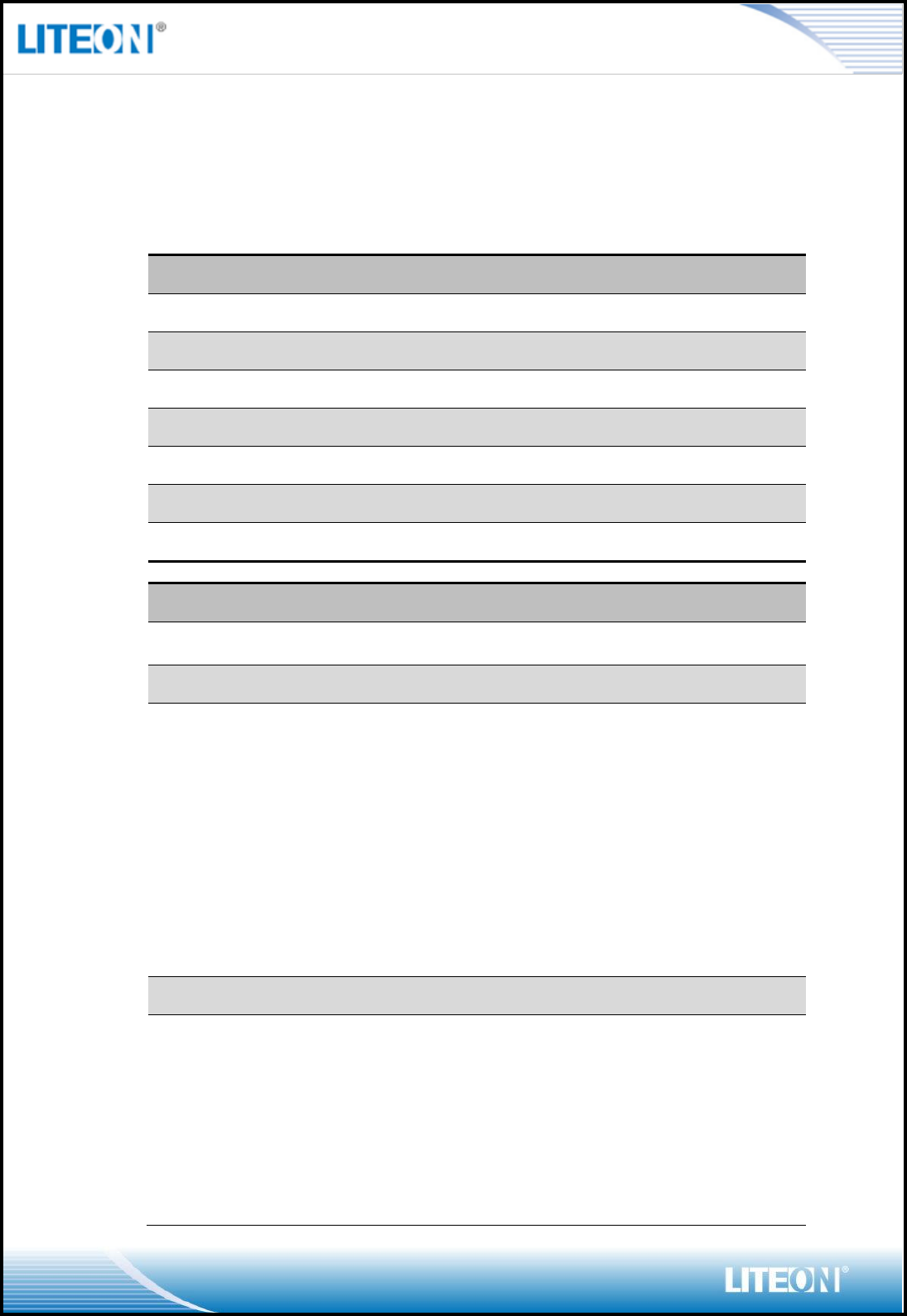
Page 5/11
PRODUCT SPECIFICATIONS
MAIN CHIPSET
MediaTek MT7662U
FUNCTIONAL SPECIFICATIONS
BT Function
Standard
Bluetooth V4.0LE
Bus Interface
USB2.0
Data Rate
1 Mbps, 2Mbps and Up to 3Mbps
Modulation Scheme
GFSK, π/4-DQPSK and 8-DPSK
Frequency Range
2.402~2.480 GHz
Transmit Output Power
+4 ≤ Output Power ≤ +10dBm; Class 1 Device
Receiver Sensitivity
< 0.1% BER at -80dBm
Wi-Fi Function
Standard
IEEE802.11a; IEEE802.11b; IEEE 802.11g; IEEE
802.11n; IEEE802.11ac
Bus Interface
USB2.0
Data Rate
802.11a:
54, 48, 36, 24, 18, 12, 9, 6 Mbps
802.11b:
11, 5.5, 2, 1 Mbps
802.11g:
54, 48, 36, 24, 18, 12, 9, 6 Mbps
802.11n:
MCS 0 to 15 for HT20MHz
MCS 0 to 15 for HT40MHz
802.11ac:
MCS 0 to 8 for HT20MHz
MCS 0 to 9 for HT40MHz
MCS 0 to 9 for HT80MHz
Media Access Control
CSMA/CA with ACK
Modulation Technique
802.11a:
64QAM, 16QAM, QPSK, BPSK
802.11b:
CCK, DQPSK, DBPSK
802.11g:
64QAM, 16QAM, QPSK, BPSK
802.11n:
64QAM, 16QAM, QPSK, BPSK
802.11ac:
256QAM, 64QAM, 16QAM, QPSK, BPSK
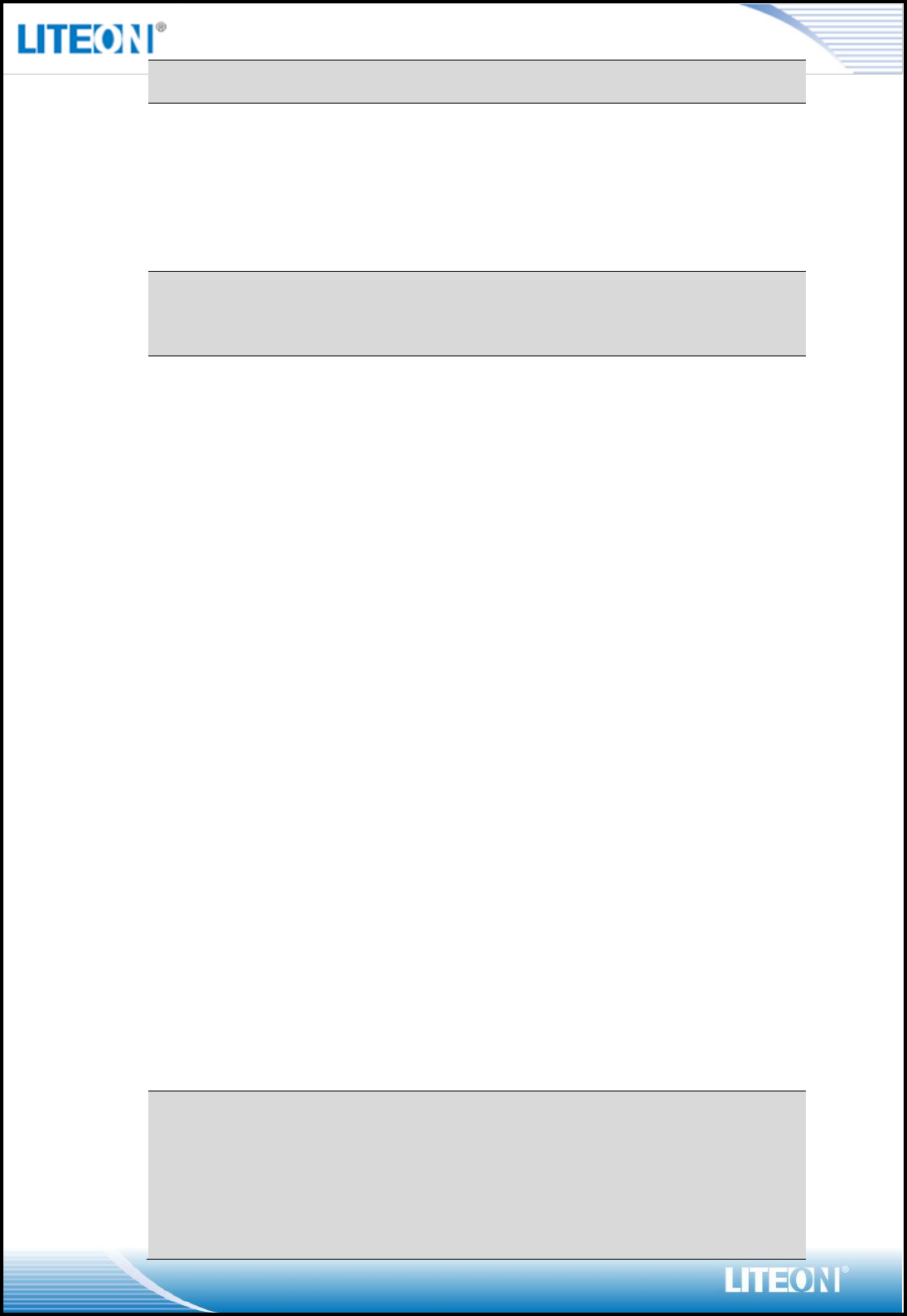
Page 6/11
Network Architecture
Ad-hoc mode (Peer-to-Peer)
Infrastructure mode
Operation Channel
2.4GHz
11: (Ch. 1-11) – United States
13: (Ch. 1-13) – Europe
14: (Ch. 1-14) – Japan
5GHz
21: USA
19: EU
8: Japan
Frequency Range
802.11bg
2.400 ~ 2.4835 GHz
802.11a/ac
5.15 ~ 5.85 GHz
Transmit Output Power –
2x2 (Tolerance: ±1.5dBm)
802.11a:
13 dBm@6Mbps
13 dBm@54Mbps
802.11b:
15 dBm@1Mbps
15 dBm@11Mbps
802.11g:
14 dBm@6Mbps
14 dBm@54Mbps
802.11n(2.4G):
20MHz:
14 dBm@MCS0
14 dBm@MCS7
40MHz:
12 dBm@MCS0
12 dBm@MCS7
802.11n(5G):
20MHz:
13 dBm@MCS0
13 dBm@MCS7
40MHz:
11 dBm@MCS0
11 dBm@MCS7
802.11ac:
20MHz:
11 dBm@MCS0
11 dBm@MCS8
40MHz:
11 dBm@MCS0
11 dBm@MCS8
11 dBm@MCS9
80MHz:
11 dBm@MCS0
11 dBm@MCS8
11 dBm@MCS9
Receiver Sensitivity
802.11a:
-86 dBm@6Mbps
-70 dBm@54Mbps
802.11b:
-88 dBm@1Mbps
-82 dBm@11Mbps
802.11g:
-86 dBm@6Mbps
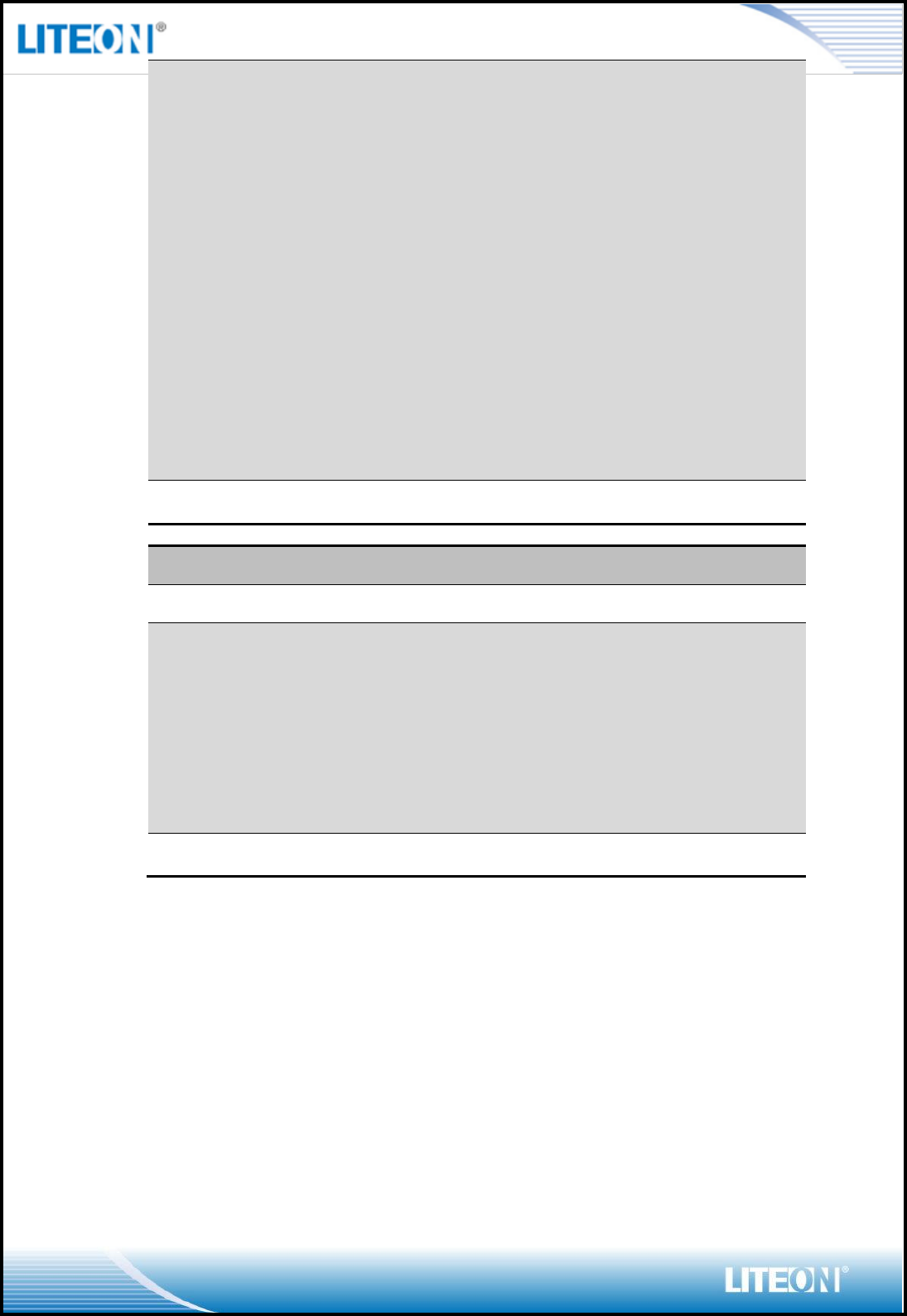
Page 7/11
-71 dBm@54Mbps
802.11n:
2.4G/5G
20MHz
-86 dBm@MCS0
-70 dBm@MCS7
-68 dBm@MCS15
40MHz
-83 dBm@MCS0
-67 dBm@MCS7
-65 dBm@MCS15
802.11ac:
20MHz
-64 dBm@MCS8
40MHz
-62 dBm@MCS8
-59 dBm@MCS9
80MHz
-59 dBm@MCS8
-56 dBm@MCS9
Security
WPS, WPA, WPA2, WEP 64bit & 128bit, IEEE 802.1X,
IEEE 802.11i
Common Function
Operating Voltage
5 V ±5% I/O supply voltage
Power Consumption
TX Mode:
TBD mA
RX Mode:
TBD mA
Standby Mode:
WiFi+BT: TBD mA
WiFi only: TBD mA
BT only: TBD mA
Disable Model:
TBD mA
Antenna Type
Triple U.FL connectors for plugging WiFi&BT external
antenna
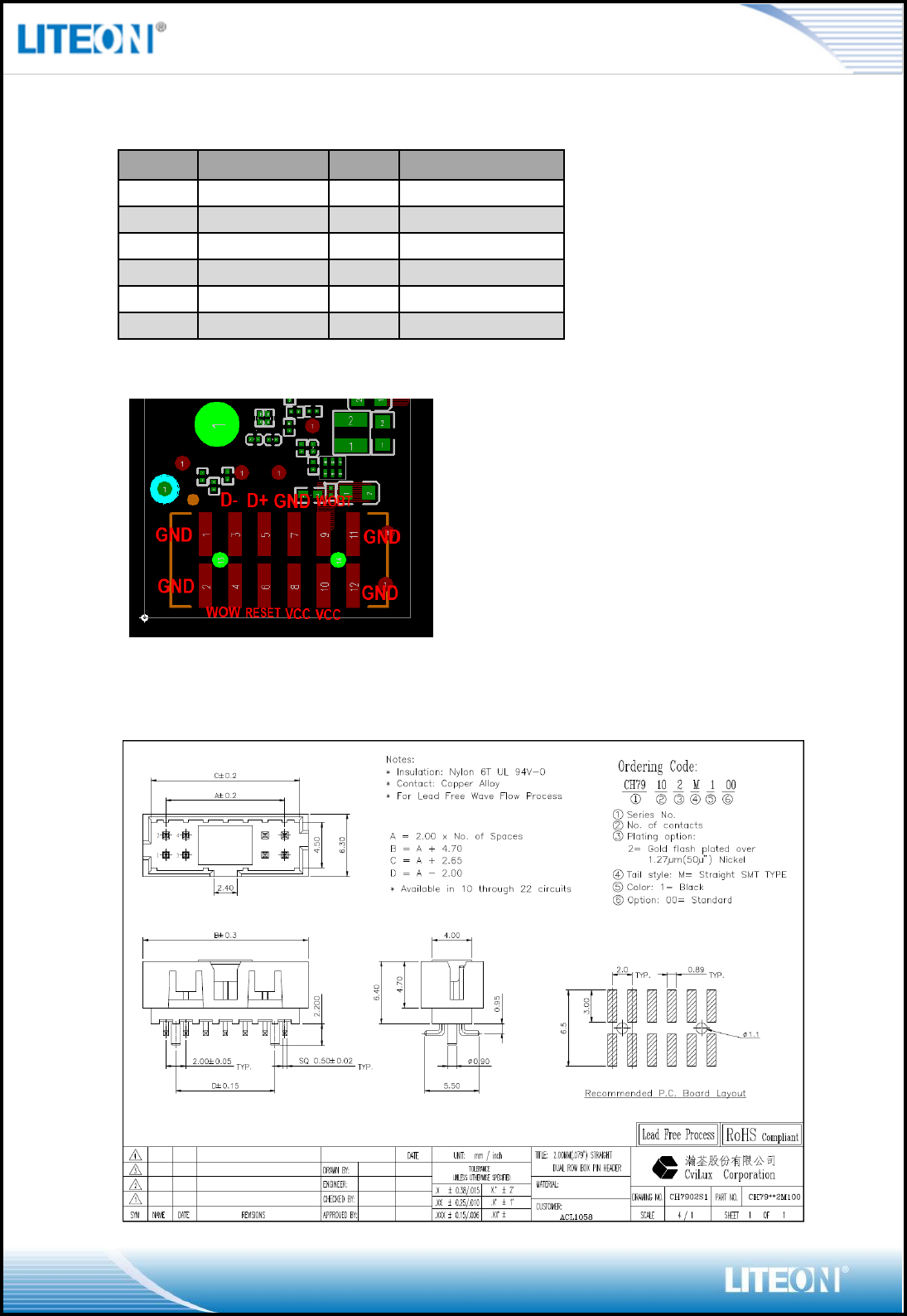
Page 8/11
PIN ASSIGMENT
Pin.
Pin Define
Pin.
Pin Define
1
GND
2
GND
3
D-
4
WOW
5
D+
6
RESET#
7
GND
8
VCC
9
WOB
10
VCC
11
GND
12
GND
Top View
USB CONNECTOR SPEC
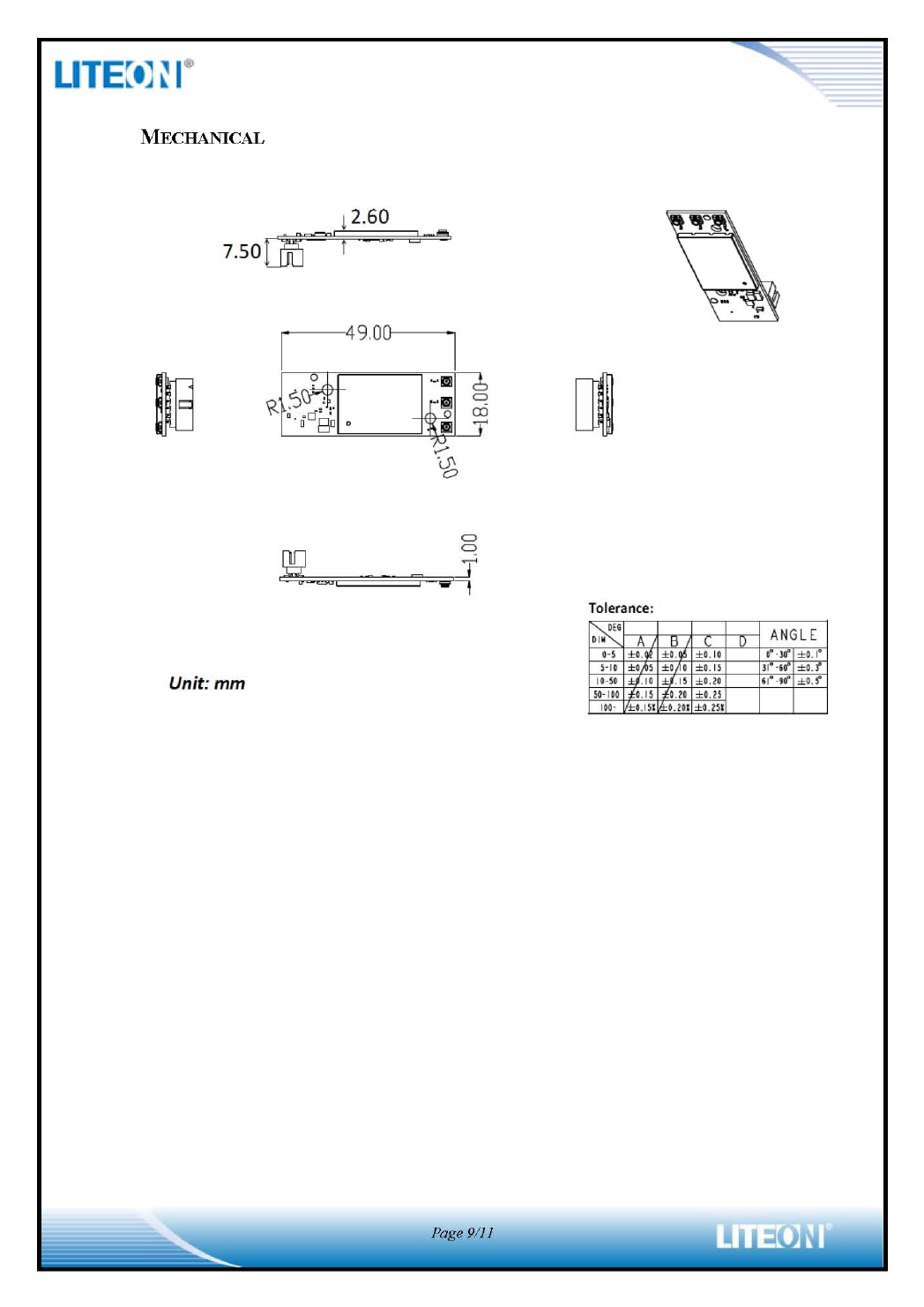
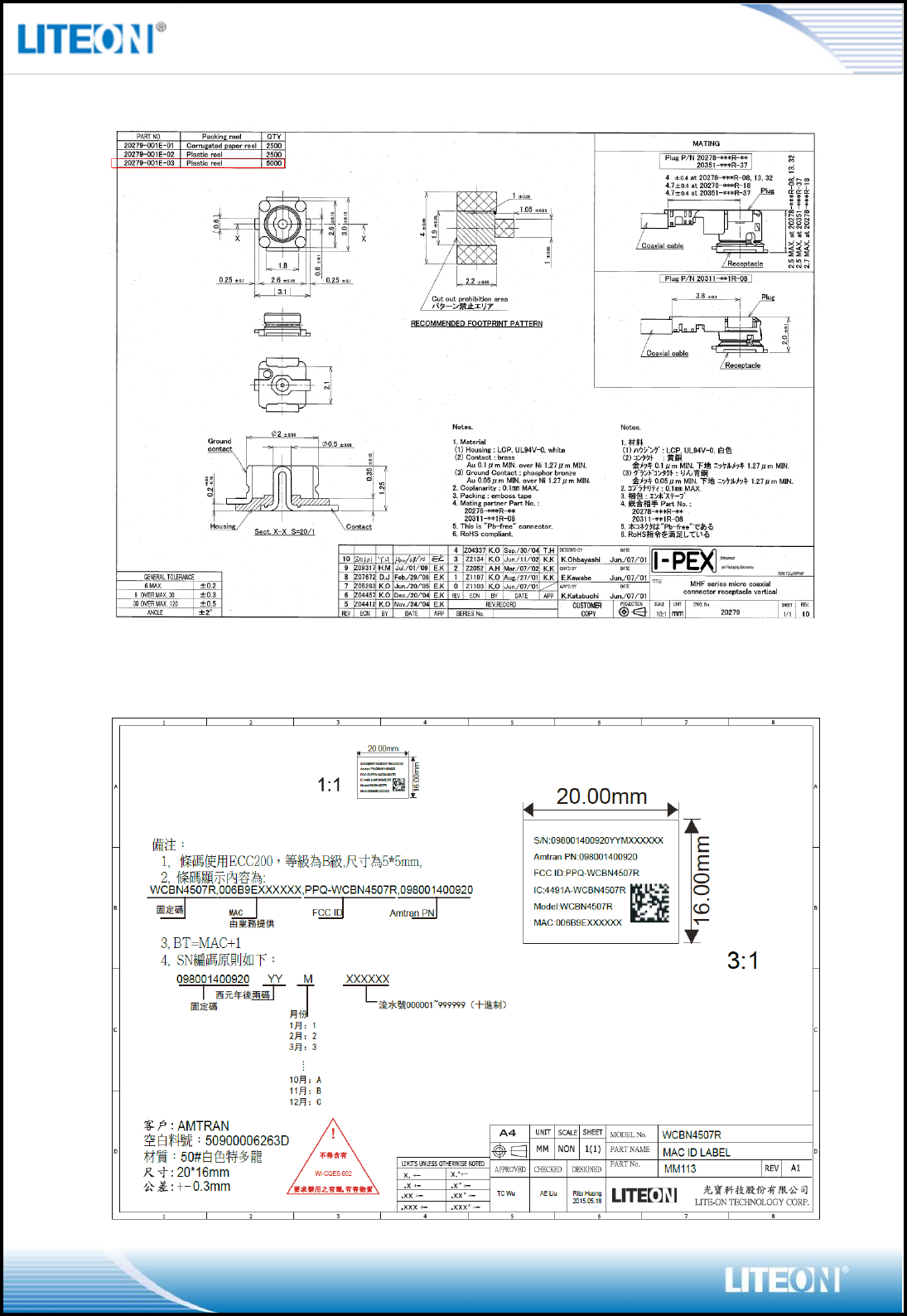
Page 10/11
U.FL CONNECTOR SPEC
LABEL DRAWING
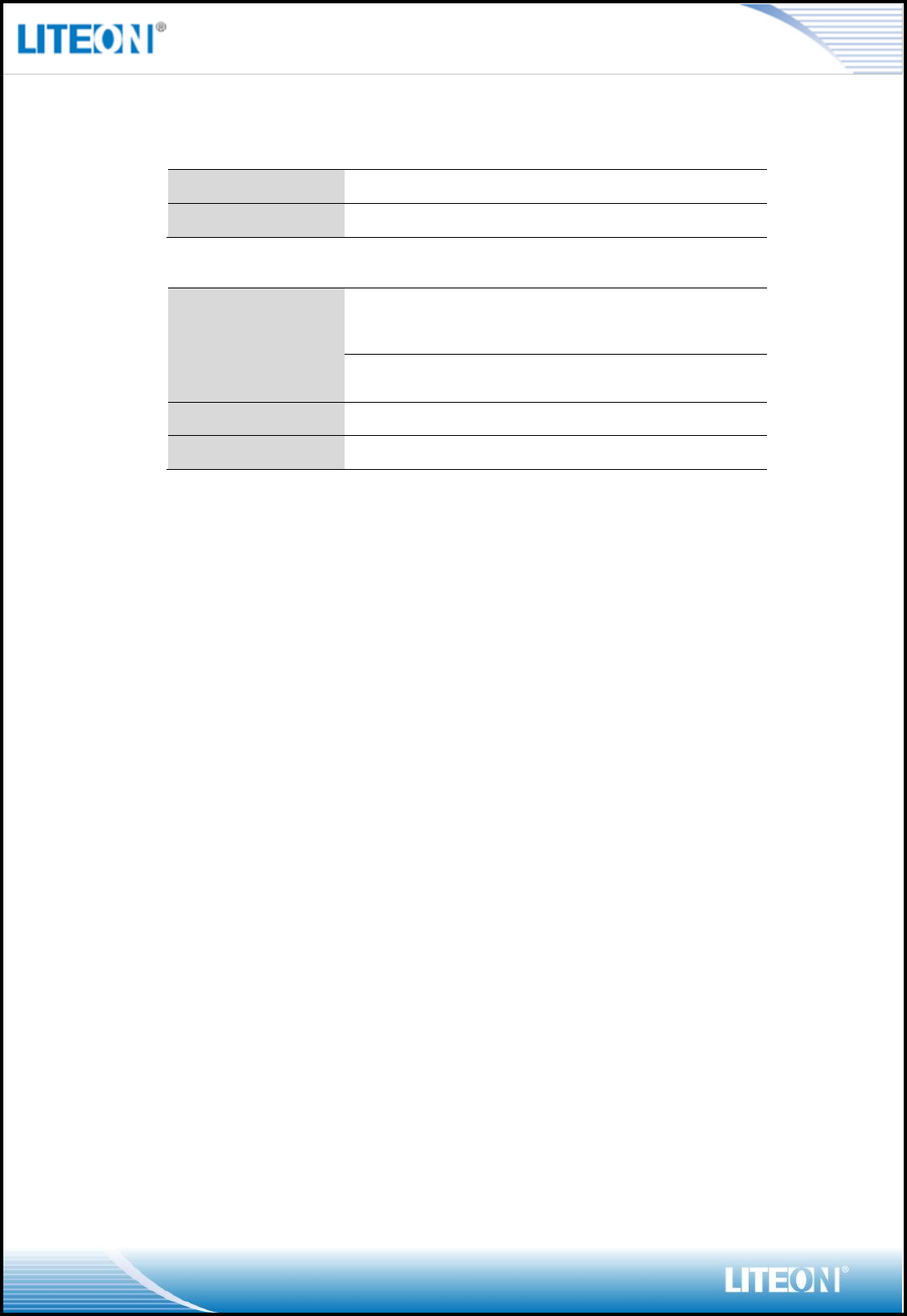
Page 11/11
EEPROM INFORMATION
BT
Vendor ID
0x0E8D
Product ID
0x7662
WI-FI
Reg Domain
World Wide
2.4G/5G
Read from registry; Control by driver
Offset 0x38 for 5G: 0xFF
Offset 0x39 for 2.4G: 0xFF
Vendor ID
0x0E8D
Device ID
0x7662
ENVIRONMENTAL
OPERATING
Operating Temperature: 0 to 70 C (32 to 158 F)
Relative Humidity: 5-90% (non-condensing)
STORAGE
Temperature: -40 to 80 C (-40 to 176 F)
Relative Humidity: 5-95% (non-condensing)
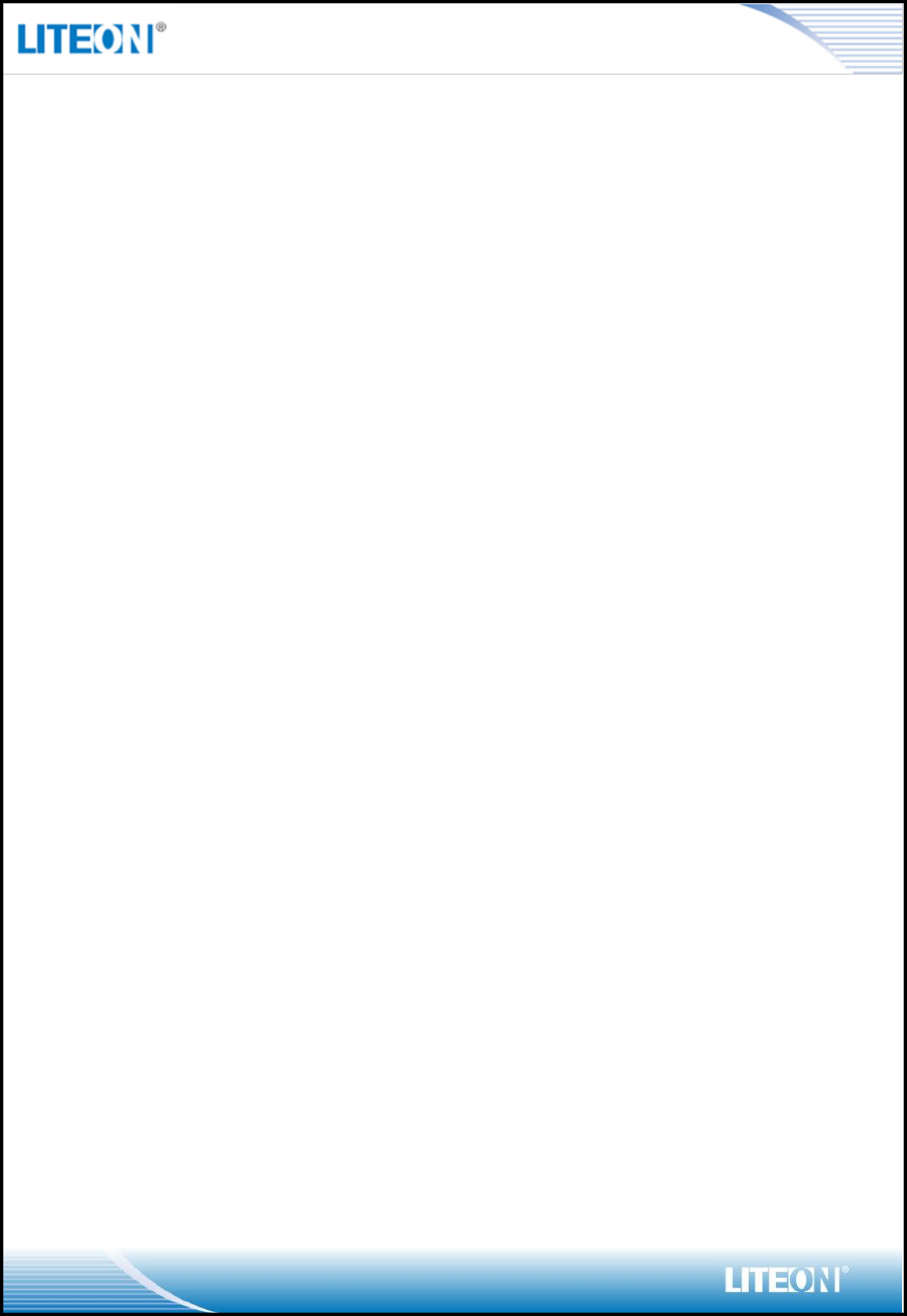
FCC WARING STATEMENT
This equipment has been tested and found to comply with the limits for a Class B digital device,
pursuant to part 15 of the FCC rules. These limits are designed to provide reasonable protection
against harmful interference in a residential installation. This equipment generates, uses and can
radiate radio frequency energy and, if not installed and used in accordance with the instructions,
may cause harmful interference to radio communications. However, there is no guarantee that
interference will not occur in a particular installation. If this equipment does cause harmful
interference to radio or television reception, which can be determined by turning the equipment
off and on, the user is encouraged to try to correct the interference by one or more of the
following measures:
Reorient or relocate the receiving antenna.
Increase the separation between the equipment and receiver.
Connect the equipment into an outlet on a circuit different from that to which the receiver is
connected.
Consult the dealer or an experienced radio/TV technician for help.
You are cautioned that changes or modifications not expressly approved by the party responsible
for compliance could void your authority to operate the equipment.
This device complies with Part 15 of the FCC Rules. Operation is subject to the following two
conditions: (1) this device may not cause harmful interference and (2) this device must accept
any interference received, including interference that may cause undesired operation.
FCC RF Radiation Exposure Statement:
1. This Transmitter must not be colocated or operating in conjunction with any other antenna
or transmitter.
2. This equipment complies with FCC RF radiation exposure limits set forth for an uncontrolled
environment. This equipment should be installed and operated with a minimum distance of 20
centimeters between the radiator and your body.
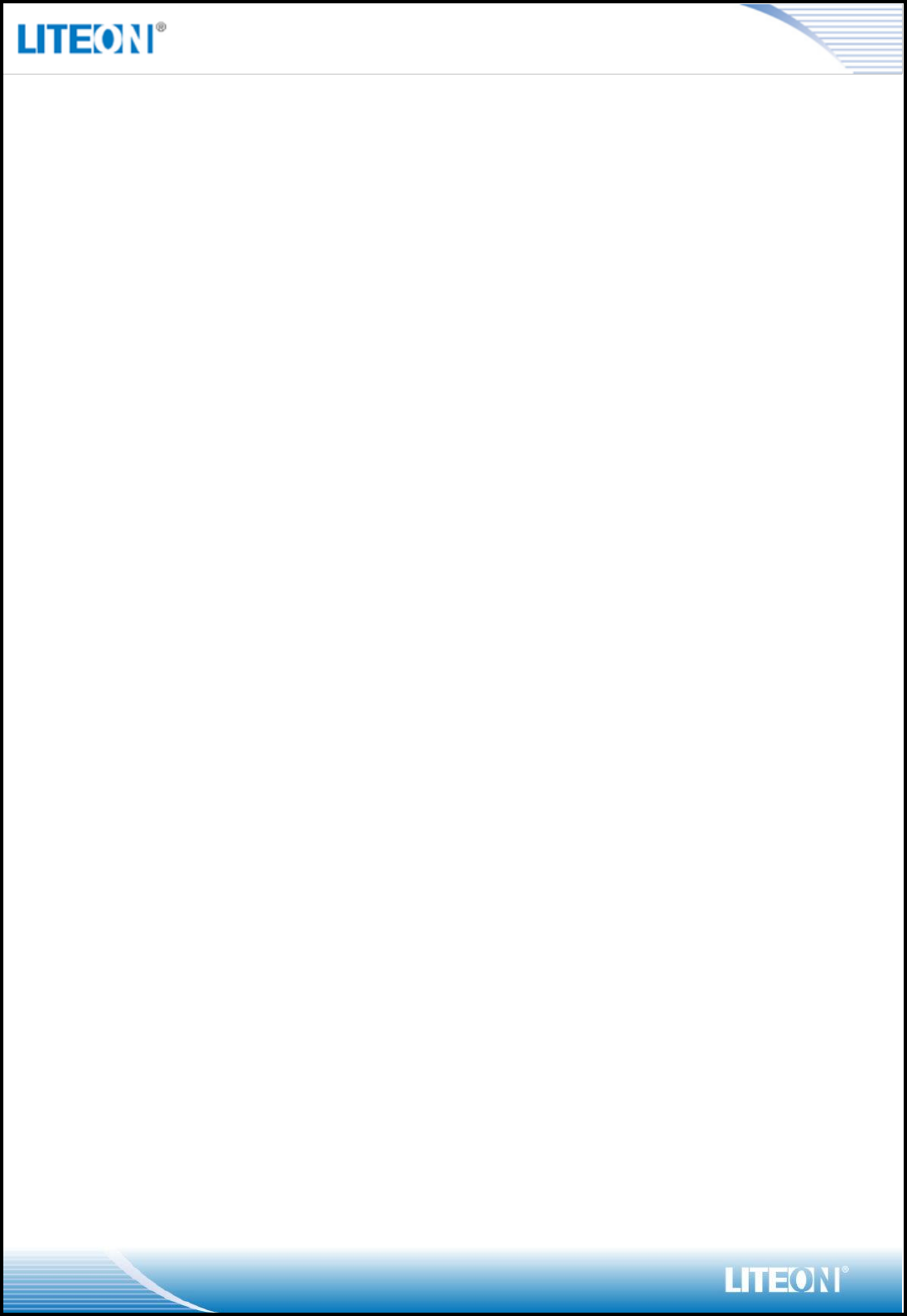
According to FCC 15.407(e), the device is intended to operate in the frequency band of 5.15GHz
to 5.25GHz under all conditions of normal operation. Normal operation of this device is restricted
to indoor used only to reduce any potential for harmful interference to cochannel MSS
operations.
Information to OEM integrator
The OEM integrator has to be aware not to provide information to the end user regarding how to
install or remove this RF module in the user manual of the end product. The user manual which is
provided by OEM integrators for end users must include the following information in a prominent
location.
1. To comply with FCC RF exposure compliance requirements, the antenna used for this
transmitter must be installed to provide a separation distance of at least 20 cm from all persons
and must not be co- located or operating in conjunction with any other antenna or transmitter,
except in accordance with FCC multitransmitter product transmitter product procedures.
2. Only those antennas with same type and lesser gain filed under this FCC ID number can be
used with this device.
3. The regulatory label on the final system must include the statement: “Contains FCC ID: PPQ-
WCBN4507R“.
4. The final system integrator must ensure there is no instruction provided in the user manual or
customer documentation indicating how to install or remove the transmitter module except such
device has implemented twoways authentication between module and the host system.
5. If the end product integrating this module is going to be operated in 5.15 ~5.25GHz frequency
range, the warning statement in the user manual of the end product should include the restriction
of operating this device in indoor could void the user’s authority to operate the equipment.
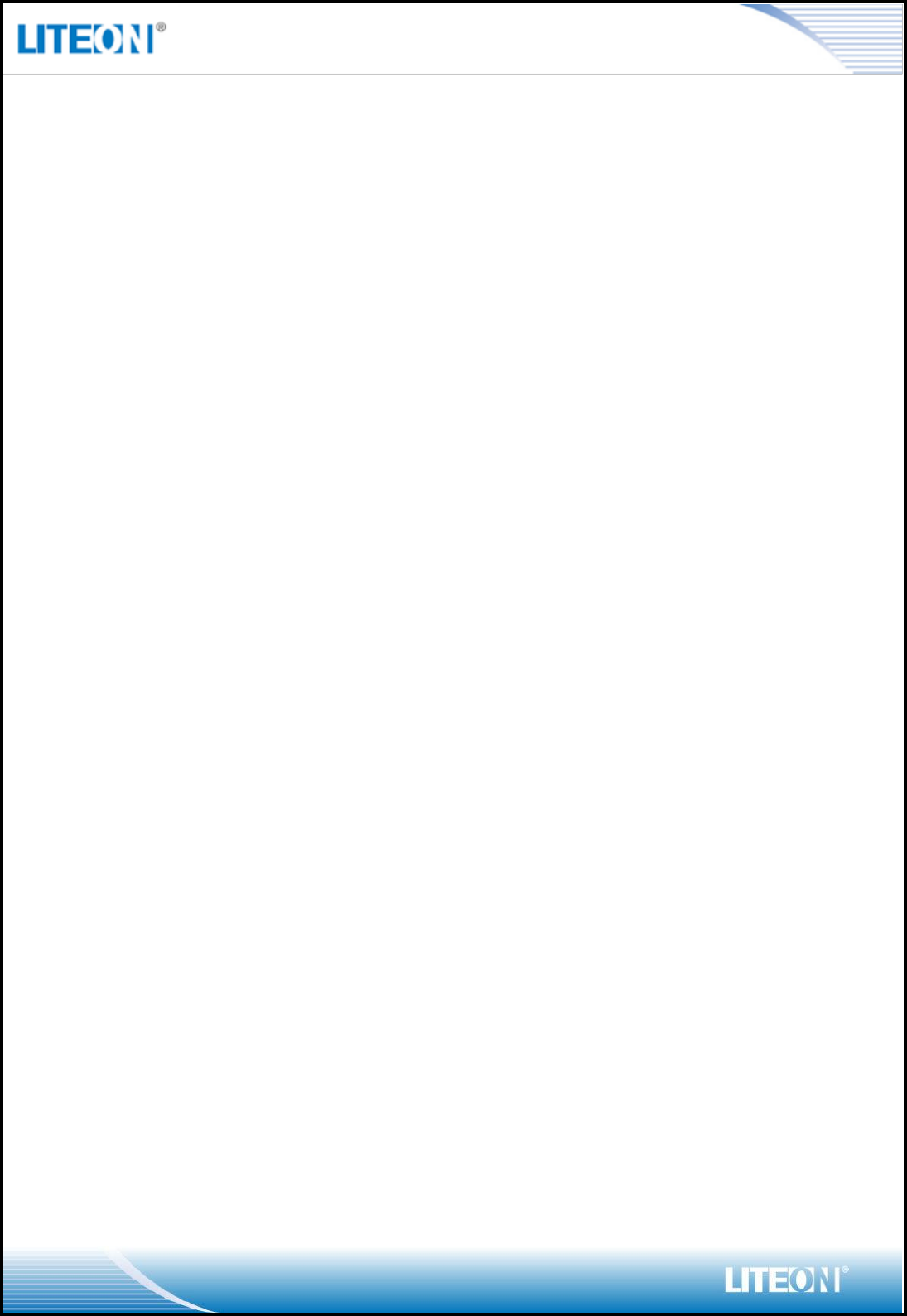
IC WARING STATEMENT
Canada, Industry Canada (IC) Notices
This Class B digital apparatus complies with Canadian ICES-003 and RSS-247.
Operation is subject to the following two conditions: (1) this device may not cause
interference, and (2) this device must accept any interference, including interference
that may cause undesired operation of the device.
Canada, avis d'Industry Canada (IC)
Cet appareil numerique de classe B est conforme aux normes canadiennes ICES-003 et
RSS-247.
IC Son fonctionnement est soumis aux deux conditions suivantes : (1) cet appareil ne doit
pas causer d'interference et (2) cet appareil doit accepter toute interference, notamment
les interferences qui peuvent affecter son fonctionnement.
Radio Frequency (RF) Exposure Information
The radiated output power of the Wireless Device is below the Industry Canada (IC)
radio frequency exposure limits. The Wireless Device should be used in such a manner
such that the potential for human contact during normal operation is minimized.
This device has also been evaluated and shown compliant with the IC RF Exposure
limits under mobile exposure conditions. (antennas are greater than 20cm from a
person's body).
Informations concernant l'exposition aux frequences radio (RF)
La puissance de sortie emise par l’appareil de sans fil est inferieure a la limite
d'exposition aux frequences radio d'Industry Canada (IC).
Utilisez l’appareil de sans fil de facon a minimiser les contacts humains lors du fonctionnement normal.
Ce peripherique a egalement ete evalue et demontre conforme aux limites d'exposition
aux RF d'IC dans des conditions d'exposition a des appareils mobiles (les antennes se
situent a moins de 20 cm du corps d'une personne).
Host device labeling requirement in accordance with RSP-100 Section 7.2:
The host device shall be properly labeled to identify the modules within the host device.
The Industry Canada certification label of a module shall be clearly visible at all times when installed in
the host device; otherwise, the host device must be labeled to display the Industry Canada certification
number for the module, preceded by the words "Contains transmitter module", or the word "Contains", or
similar wording expressing the same meaning, as follows:
Contains transmitter module IC: 4491A-WCBN4507R
where 4491A-WCBN4507R is the module’s certification number
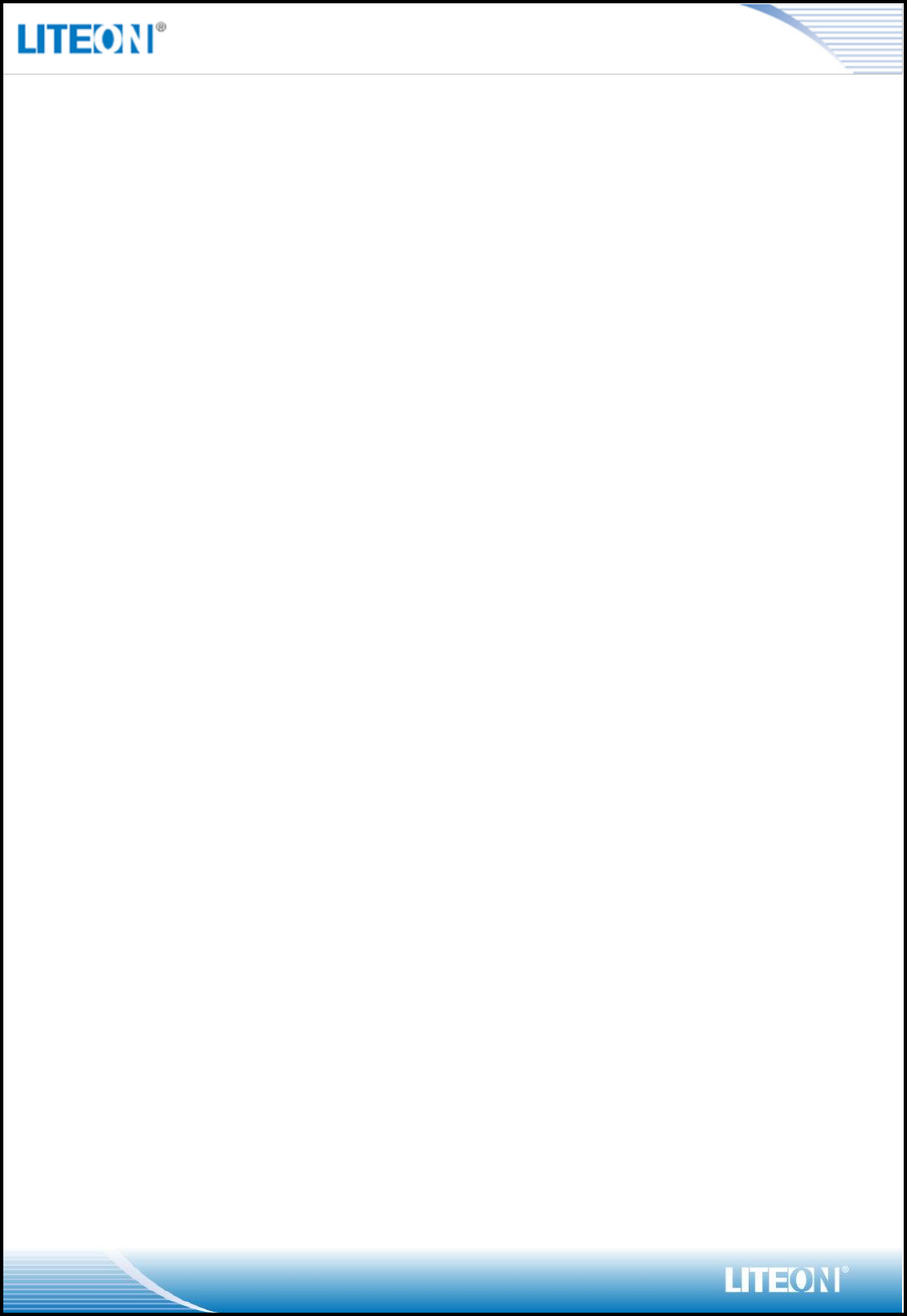
IC WARING STATEMENT
i. the device for operation in the band 5150-5250 MHz is only for indoor use to reduce the potential for
harmful interference to co-channel mobile satellite systems;
ii. for devices with detachable antenna(s), the maximum antenna gain permitted for devices in the bands
5250-5350 MHz and 5470-5725 MHz shall be such that the equipment still complies with the e.i.r.p. limit;
iii. for devices with detachable antenna(s), the maximum antenna gain permitted for devices in the band
5725-5850 MHz shall be such that the equipment still complies with the e.i.r.p. limits specified for point-to-
point and non-point-to-point operation as appropriate; and
iv.the worst-case tilt angle(s) necessary to remain compliant with the e.i.r.p. elevation mask requirement
set forth in Section 6.2.2(3) shall be clearly indicated.
High power radars are allocated as primary users (meaning they have priority) of
5250-5350 MHz and 5650-5850 MHz bands and these radars could cause interference
and/or damage to LE-LAN (Licence-Exempt Local Area Network) devices.